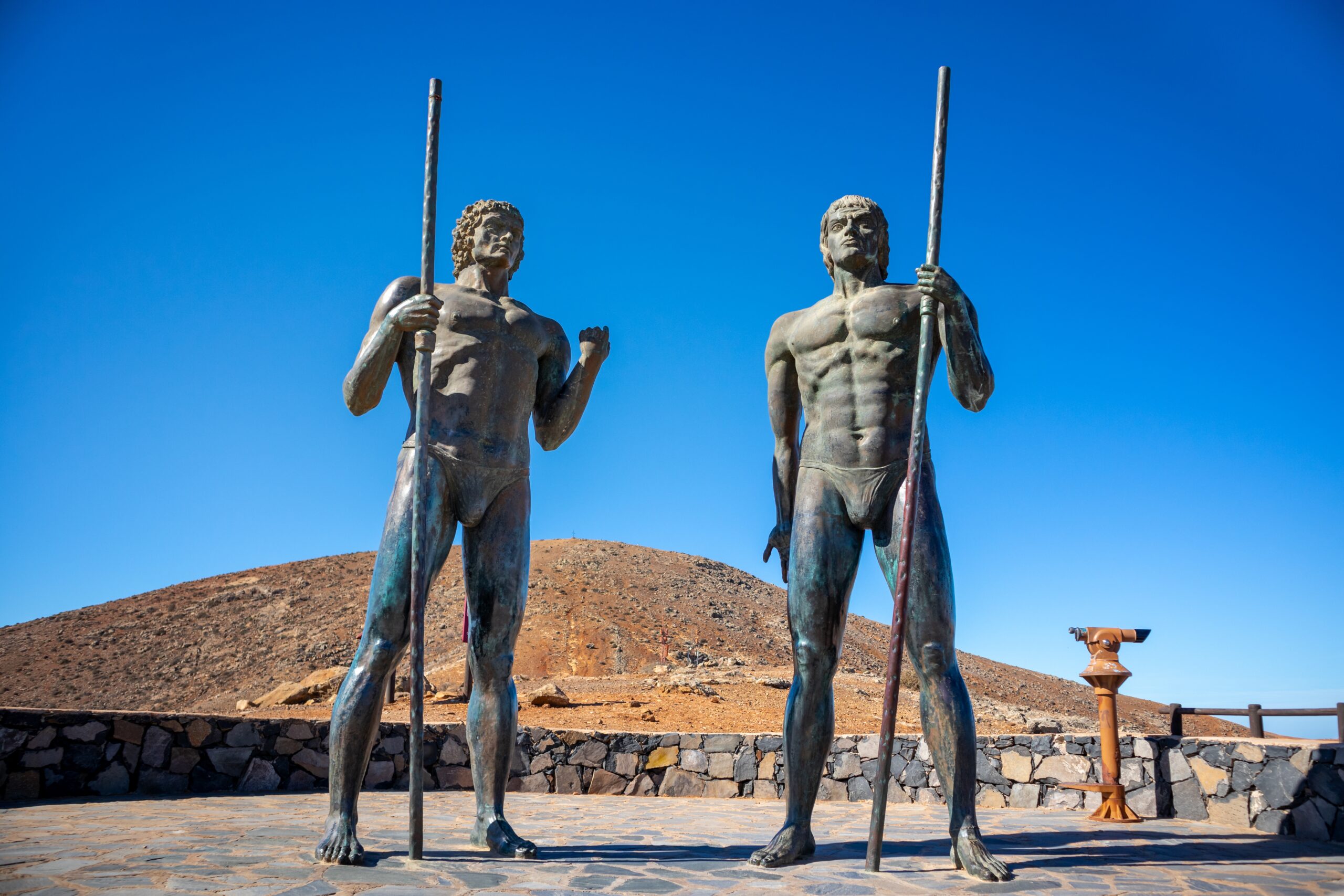Pre-conquest, Fuerteventura was split into two realms: Jandía in the South and Maxorata in the North, each governed by the ancient Maho kings, Guise and Ayose.
In the vicinity of the bronze statues honoring these esteemed aboriginal monarchs, there’s a belief that an extensive wall once stood. This wall, constructed by early settlers, served as a visible marker, instantly recognizing the boundaries between the two kingdoms.
The ongoing debates and conflicts between the two kings necessitated the construction of the wall. This served to prevent the livestock of one monarch from encroaching on the precious pastures of the otherduring times of scarcity and drought.
One day, numerous boats reached the shores of Erbania’s coast – now known as Fuerteventura. Tibiabín, a priestess from the village, alerted Guise and Ayose about the potential dangers posed by the arriving men and the consequences if they resisted the demands brought by the sea-faring group.
According to historical accounts, when the conquerors Juan de Bethencourt and Gadifer de la Salle landed on Fuerteventura, Guise and Ayose fiercely resisted, putting up a determined fight to safeguard their land from being taken over.
Following an extended conflict, the indigenous kings were captured and underwent baptism, alongside the priestess Tibiabín herself. As time passed, Tibiabín vanished from the island, purportedly abducted by pirates. Her daughter, Tamonante, another revered aboriginal priestess, unable to bear the void left by her mother’s absence

